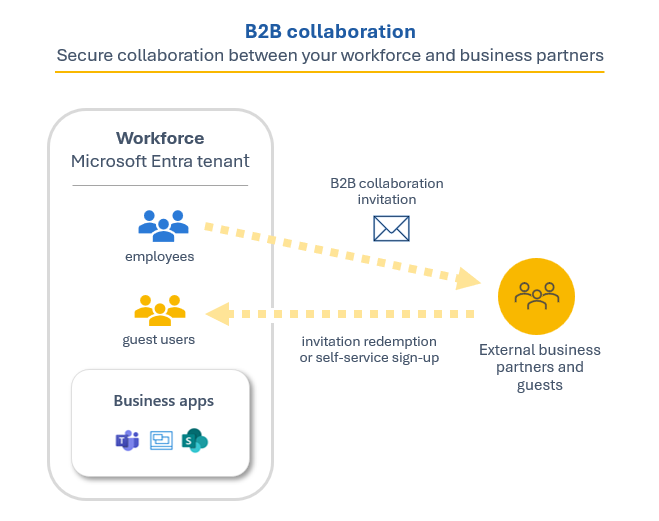
B2B services https://www.partner2b.com/services In an increasingly interconnected economy, B2B services have become the backbone of enterprise efficiency and innovation. From procurement and logistics to digital transformation and specialized consulting, B2B service providers enable companies to focus on core competencies while leveraging external expertise to accelerate growth, control costs, and improve service delivery. This article outlines key trends, selection criteria, implementation best practices, and measurable outcomes that business leaders should consider when engaging with B2B service partners.
Market dynamics driving demand for B2B services include globalization, rapid technological change, and rising expectations for agility. Enterprises face pressure to scale operations quickly, enter new markets, and deliver personalized experiences to their clients. B2B services help organizations address these challenges by providing access to talent, technology, and operational models that would be costly or time-consuming to develop in-house. Whether a company seeks a managed IT platform, supply chain optimization, outsourced customer support, or advisory services, the right partner can transform constraints into competitive advantages.
When evaluating prospective B2B service providers, decision-makers should assess several dimensions beyond price. Core criteria include domain expertise, track record with similar clients, technological capability, data security and compliance, cultural fit, and the ability to demonstrate measurable outcomes. Look for providers who present case studies with quantifiable results—reduced time-to-market, cost savings, increased customer retention, or improved service levels. References and proof-of-concept pilots are valuable tools to validate a provider’s claims before committing to long-term contracts.
Technology plays a pivotal role in modern B2B services. Cloud-native platforms, APIs, analytics, automation, and AI are no longer optional; they are essential components of service delivery and continuous improvement. Providers that invest in modular architectures and open integrations enable buyers to plug new capabilities into existing stacks with minimal disruption. Additionally, analytics-driven insights empower both buyer and provider to monitor performance, optimize workflows, and identify opportunities for further collaboration. A mature technology stack also supports scalability, enabling services to grow in line with business needs.

Successful B2B engagements are rooted in clear governance and shared objectives. Establish a governance framework that defines roles, escalation paths, KPIs, and reporting cadences. Agree on service level agreements (SLAs) that link performance to business outcomes rather than only technical metrics. Regular executive reviews ensure alignment with strategic priorities and create space to adjust scope as market conditions evolve. Building a collaborative relationship rather than an adversarial vendor-buyer dynamic fosters innovation and long-term value creation.
Risk management and compliance are critical considerations, especially for organizations handling sensitive data or operating in regulated industries. Ensure that service providers adhere to relevant standards and certifications, maintain robust incident response plans, and demonstrate transparent audit capabilities. Clarify responsibilities for data ownership, breach notification procedures, and remediation obligations. A well-documented risk framework reduces surprises and builds trust between parties.
Transition and change management determine the practical success of outsourcing or partnering initiatives. A phased migration approach—starting with low-risk processes and progressing to mission-critical functions—helps teams build confidence and refine collaboration models. Invest in stakeholder communication, training, and knowledge transfer to minimize disruption. The provider should offer a clear playbook for handoffs, escalation, and continuous improvement so the client can retain institutional knowledge even as processes are optimized or automated.
Cost is often the starting point for procurement, but a focus solely on short-term savings can undermine long-term gains. Consider total cost of ownership (TCO), including transitional costs, governance overhead, and potential opportunity costs. Evaluate how the partnership will free internal capacity for strategic initiatives, accelerate product development, or improve customer lifetime value. A value-based commercial model—linking fees to outcomes—can align incentives and deliver superior returns for both parties.
Customization versus standardization is another trade-off to navigate. Standardized service models lower costs and accelerate deployment, while bespoke solutions can address unique business processes and competitive differentiators. The ideal partner offers a balance: configurable platforms or services that support core business needs out-of-the-box, with the flexibility to adapt where differentiation matters most. This hybrid approach enables efficient operations while preserving innovation potential.

Performance measurement should emphasize actionable metrics. Typical KPIs include cycle time reductions, error rates, customer satisfaction scores, cost per transaction, and revenue contribution from supported activities. Establish baseline metrics prior to engagement and define a cadence for reviewing progress. Leverage dashboards and automated reporting to maintain visibility and support data-driven decisions. Periodic business reviews should translate operational metrics into strategic implications so investments can be recalibrated for maximum impact.
Partnerships can also foster co-innovation. Leading B2B providers act as extensions of their clients’ teams, bringing industry insights, new technologies, and process innovations. Co-development programs, joint labs, or shared roadmaps enable both organizations to capture new market opportunities and accelerate time-to-value. Contracts that include mechanisms for shared IP, pilot funding, and scalable rollouts incentivize collaborative investment in future capabilities.
As the B2B landscape evolves, emerging trends will shape the next generation of services. Expect increased use of AI for predictive analytics and process automation, expanded marketplace models that connect specialized providers, and greater emphasis on sustainability and ethical supply chains. Data interoperability and standardized APIs will enable faster integrations and richer ecosystems. Companies that adopt a strategic, partnership-oriented approach to B2B services will be better positioned to leverage these trends for competitive advantage.
To summarize, selecting and managing B2B services requires a holistic approach that balances expertise, technology, governance, and measurable outcomes. Prioritize providers with proven results, scalable platforms, and a collaborative mindset. Define clear KPIs, manage risk and compliance proactively, and focus on total value rather than short-term cost reduction. With the right partner and a disciplined engagement model, B2B services can unlock efficiency, innovation, and growth across the enterprise.
For executives and procurement teams, the practical next steps are straightforward: map your most pressing operational challenges, identify potential partners with relevant domain experience, run focused pilots to validate assumptions, and structure commercial terms around outcomes. By treating B2B services as strategic investments rather than transactional purchases, organizations can build resilient, scalable operations that support long-term business objectives.

